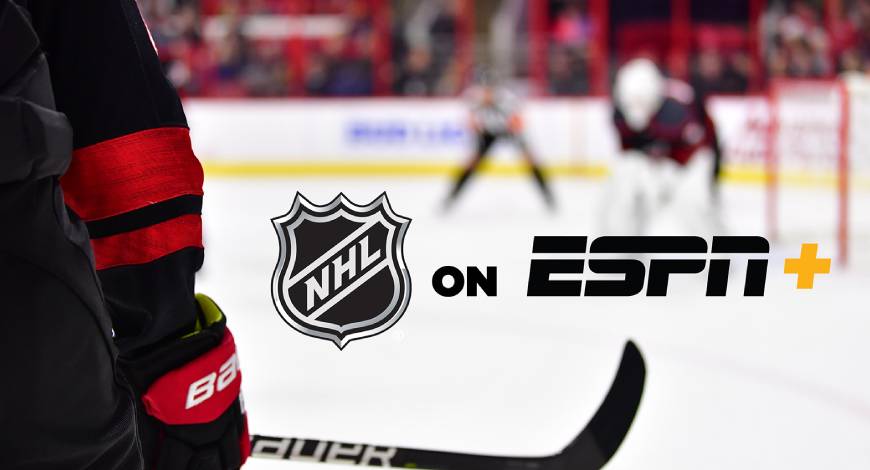International Circuit
ESPN NHL announcers to wear VR headsets for upcoming broadcast

Seismic innovations are often first dismissed as curiosity. From the bicycle to the iPhone, new tools usually require refinement before reaching mass adoption—and proving doubters wrong. “The next big thing will start out looking like a toy,” as Andreessen Horowitz partner Chris Dixon put it more than a decade ago.
It’s no wonder, then, that some of sports media’s biggest developments are arriving via the kids’ aisle. Nickelodeon’s NFL broadcasts have pushed augmented reality tech to the fore. ESPN’s Toy Story game combined two types of new player tracking capabilities to render real-life play alongside iconic playthings.
This week, ESPN is adding another novel element—virtual reality headsets—to the mix for its second NHL Big City Greens Classic, a fully animated live broadcast of a game set inside the world of a Disney Channel show.
ESPN commentators Drew Carter, Kevin Weekes and Arda Öcal will all be wearing Meta Quest Pro headsets during Saturday’s telecast of the Pittsburgh Penguins-Boston Bruins game, replacing the motion capture suits they relied on a year ago and giving them a new sense of immersion alongside (or even on top of) the digital rink.
Carter initially had some hesitations about the setup. “I’m kind of a stubborn play-by-play guy,” he said. “I only know one way to do it.”
There are also some trade-offs compared to last year’s system, which captured full body movements (rather than just heads and arms) and allowed the commentators to fully see the room around them.
However, the 26-year-old, who called the Toy Story game and last year’s Big City Greens debut, adjusted during testing, finding a way to view his typical notes below the goggles and getting his in-headset view updated so that he can see jumbotron versions of both the actual live game and the broadcast as it looks on TV above the virtual rink.
“This will be the first time where it really feels like I’m actually in an animated world,” Carter said.
He’ll be represented by a cartoon who can be placed anywhere within the virtual environment. A couple of weeks ago, Carter interviewed NHL commissioner Gary Bettman in VR; during the game he’ll also converse with an expanded roster of Big City Greens characters. Developers have redone player designs to make them more realistic and coded a few additional tricks, such as turning the skaters into their mascots (bears for the Bruins, penguins for the Penguins) during power plays.
“As a team, it’s some of the most fun stuff we ever get to work on,” Michael “Spike” Szykowny, ESPN Creative Studios VP of animation, graphics innovation and production design, said in an interview.
Verizon and Nintendo have come on as sponsors for this year’s show, which will air across ESPN+, Disney Channel, Disney XD and Disney+ while a traditional telecast will be shown on ABC and ESPN+.
Tech partners at Beyond Sports developed the Quest Pro integration, which coincided with a corporate partnership between ESPN and Meta announced last month. ESPN is building a VR version of its app and a visitable area in Meta Horizon Worlds as part of the relationship.
“Last year we looked at the whole setup, and we thought we could do this smarter,” Beyond Sports co-founder & CEO Sander Schouten said. “In the long run, it could eventually lead to having fans actually in the game (by wearing headsets themselves). That’s where we want to go and this is just a really good first step.”
Don’t be surprised to see elements of the tech filter into other broadcasts too. As VR and eye-tracking tools evolve, commentators could use headsets to demonstrate exactly what a quarterback saw on a play, for instance. Or a cartoon version of Peyton Manning could pop in to interview said star after a game.
“Gen Z and Gen Alpha are growing up in this new world where pixels and reality all blend together,” Ryan Dornbusch, Meta’s lead for metaverse sports and live entertainment production, said. “Trialing new formats is a way to open up to additional generations and bring in a broader audience.”
Less obtrusive smart glasses could also become must-have accessories for game-callers, offering translucent bits of stats and information without distracting from the field of play.
“We’ve been trying to figure out how we integrate [headsets] into studios for a long time,” ESPN senior director of business development and innovation Zack Malet said. “We’ve been thinking about how to integrate a first-person point of view for a long time, and I think this technology really allows us to do that unlike ever before.”
Of course, TV execs might also be tempted to use headsets as a way to cut down on broadcaster travel budgets, though using technology as a way to replace access rather than enhance it would be shortsighted.
It may still be some time before most sports fans bring virtual reality headsets into their homes and build a habit of putting them on. They’re expensive, sometimes a pain to set up and calibrate, and often a barrier to social interactions (if not cause for ridicule). But already, the tech’s impact can be seen on screen. VR’s days as a perceived toy could be numbered. Just ask your kids. Sportico






